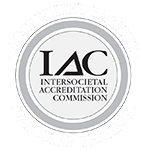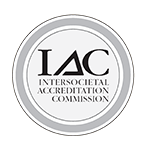
At The Cardiovascular Care Group, we realize people may not be familiar with the blue- or purple-colored veins appearing on their legs. While spider veins and varicose veins are better known, reticular veins are less common. They tend to be smaller than varicose veins and non-protruding on the skin, but yet they do create cosmetic and sometimes painful concerns that you may want to address.
No one really wants to see their legs go through such changes with new, blue lines appearing. So, to take the worry out of your leg issues, here are some Frequently Asked Questions (FAQs), regarding reticular veins and your body.
How Do I Get Reticular Veins?
Some cases of reticular veins, as with spider and varicose veins, ultimately form because a problem within the vein causes blood to flow backward, dilating and twisting the vein. Normal, healthy veins have one-way valves that keep blood moving toward the heart. But when the valves in the superficial veins of the legs and feet are not working properly, the blood can pool into the lower extremities. The pooling of blood creates surrounding pressure and swelling internally, which may result in enlarged blue, red or flesh-colored veins that can be seen through the skin.
Where Do Reticular Veins Form?
They may form areas on the inner part and back of the thighs, legs and ankles, and occasionally the face and breast can also fill with these unattractive vein clusters.
How Do I Tell the Difference Between a Reticular, Varicose or Spider Vein?
Reticular veins are small, blue or purple dilated veins that appear as 1 mm to 3 mm in diameter. These common veins are typically smaller than varicose veins but larger than spider veins and appear flatter and less twisted. Reticular veins are often accompanied by significant symptoms of local tenderness or burning and itching.
Am I at Risk for Developing These Vein Issues?
Some people have a higher risk of developing vein problems than others. Genetics may put you at a higher risk. Many people get them because they sit or stand for long periods of time. These vein problems also become more common with age and during pregnancy.
Some common causes include:
- Family history
- Previous trauma or injury can damage veins
- Gender can play a role as women are more likely to develop the condition
- Medications such as birth control and infertility drugs can increase estrogen and progesterone—hormones that are associated with higher risks for vein issues
- Pregnancy
- Obesity
- Prolonged standing or long periods of immobility can increase pressure on the veins
Can Reticular Veins Be Treated?
The good news is minimally-invasive treatment options are available and most treatments can be performed in a matter of minutes. These vein treatments can get rid of or fade leg veins and provide the look you desire. Treatment can also diminish symptoms like pain and fatigue. Some common treatments include sclerotherapy and laser ablation.
At TCVCG's vein treatment centers, we have a range of outpatient, minimally-invasive procedures to provide the best treatment plan for you and your particular vein issue. Be aware that not every facility offering vein care is staffed by qualified, board-certified vascular physicians, or can offer the full range of advanced treatments that only a vascular surgeon can deliver.
If you have more questions, feel free to contact us at The Cardiovascular Care Group.








